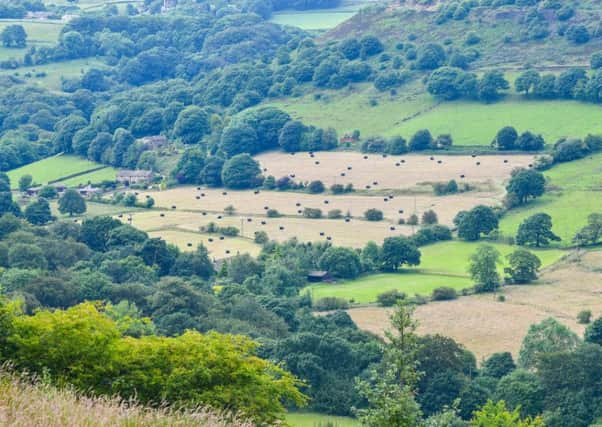Record gulf in farmland prices exacerbated by regional divide


There is a North-South divide with average arable land prices in the North recorded as £8,000 per acre in the final quarter of 2016, compared to £9,500 in the South East and £9,000 in the West Midlands.
Average prices were found to be lowest in the North for both arable and pasture land. The latter averaged just £6,100 per acre in the North whereas values were far higher further south - £7,500 in the South East and £7,300 in the East Midlands.
Advertisement
Hide AdAdvertisement
Hide AdOverall, the highest prices paid for land were more than double the lowest.
Michael Fiddes, head of estates and farm agency for Strutt & Parker, said analysis of the firm’s Farmland Database showed average arable land values at the end of 2016 were £9,500 per acre - four per cent lower than a year earlier.
He said: “The average price only tells part of the story as it masks a huge range in the prices achieved.
“The market is now more polarised than in living memory, with demand extremely location specific. An example from the South West of England highlights the extent to which this is the case. While one 150-acre block of Grade 3 arable land recently achieved just under £8,000 per acre, another very similar block four miles away sold for £15,000 per acre.”
Advertisement
Hide AdAdvertisement
Hide AdThere is little stability in the farmland market at present, Mr Fiddes said.
“There’s still strength in the market - just under half of arable land sold in England in 2016 was sold for £10,000 per acre or more, which is one of the largest proportions ever. But demand, like prices, is highly variable and almost 40 per cent of the land marketed in 2016 remains available.”
The Brexit referendum vote had a more muted immediate impact on the land market than some anticipated, the firm’s research found. A number of sales were renegotiated in the weeks following the vote but very few deals fell through.
Mr Fiddes said: “Brexit’s biggest impact was to cause uncertainty, which did result in a slowdown in the amount of land coming forward over the first nine months of the year. However, there was resurgence in the last quarter, meaning that while supply was down on 2015 levels it is in line with the five-year average.
Advertisement
Hide AdAdvertisement
Hide Ad“Some buyers and sellers are being more cautious as the long term level of support for agriculture remains uncertain. However, the big story in the farmland market has continued to be the impact of the squeeze on farm profits as a result of low commodity prices. With around half of all farmland transactions being ‘farmer-led’, it’s not surprising that as farm incomes have dropped so have average land prices.”
In the North, medium-sized arable farms in appealing locations with a good house are selling well, the study found, but bare blocks of land where there are limited options for development or diversification are proving more difficult.
A recent report by farm consultants Andersons found that recent land price increases had pushed the market to a level that many buyers find hard to justify.